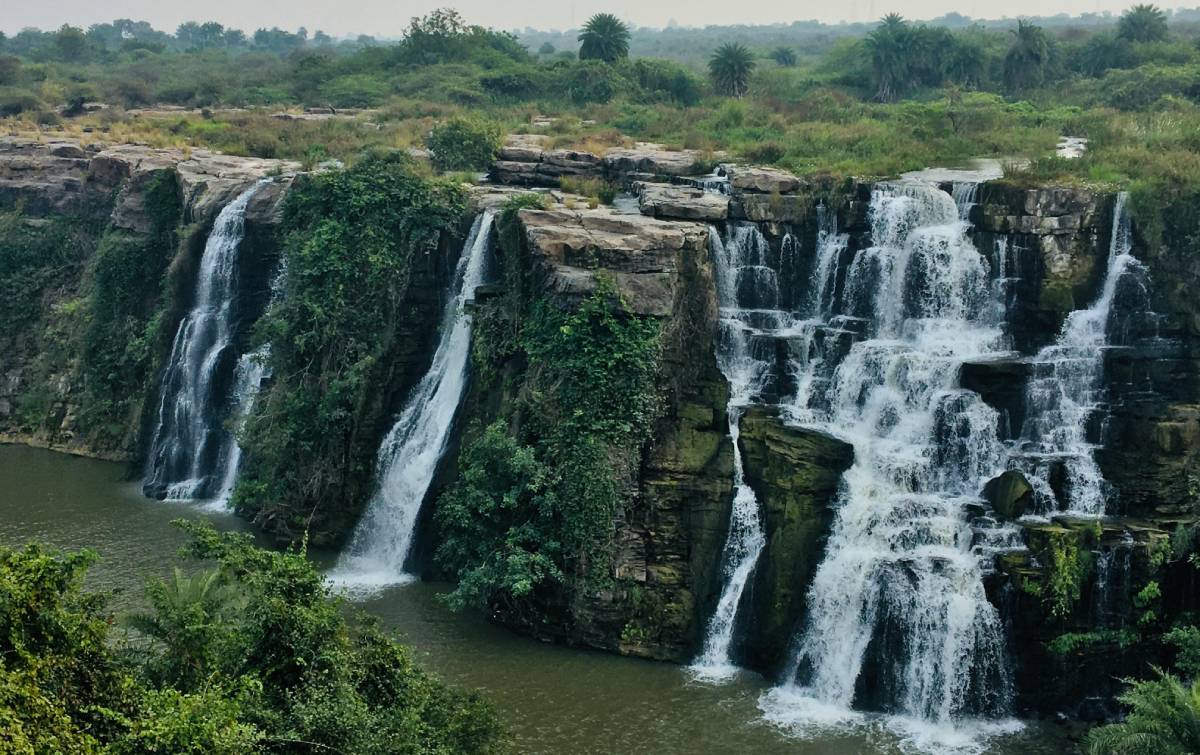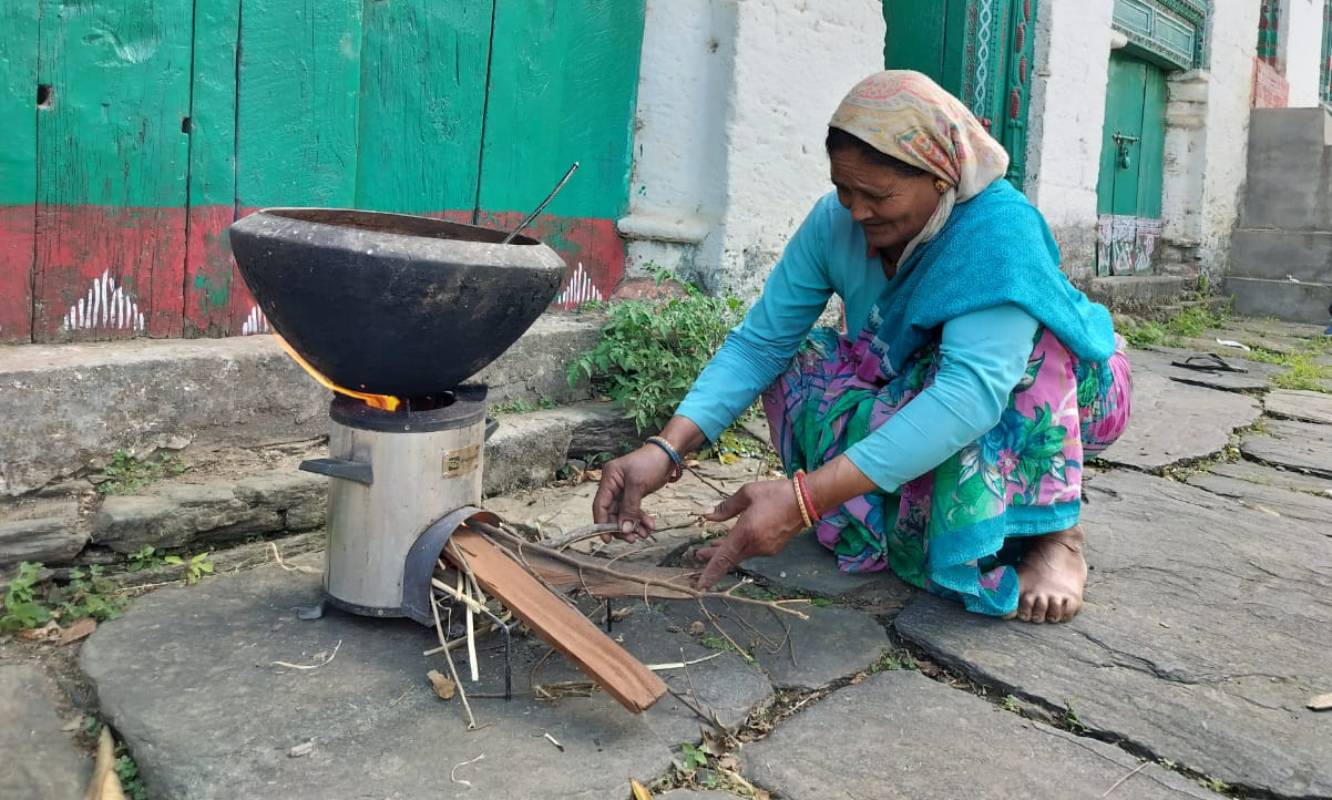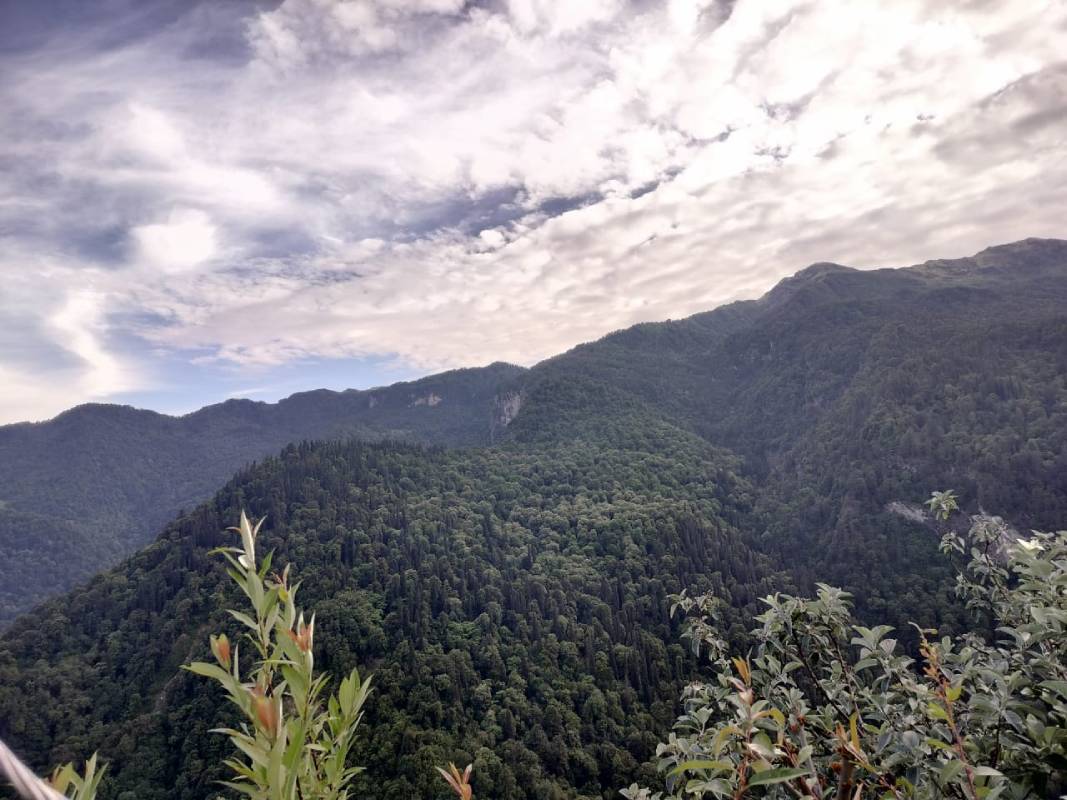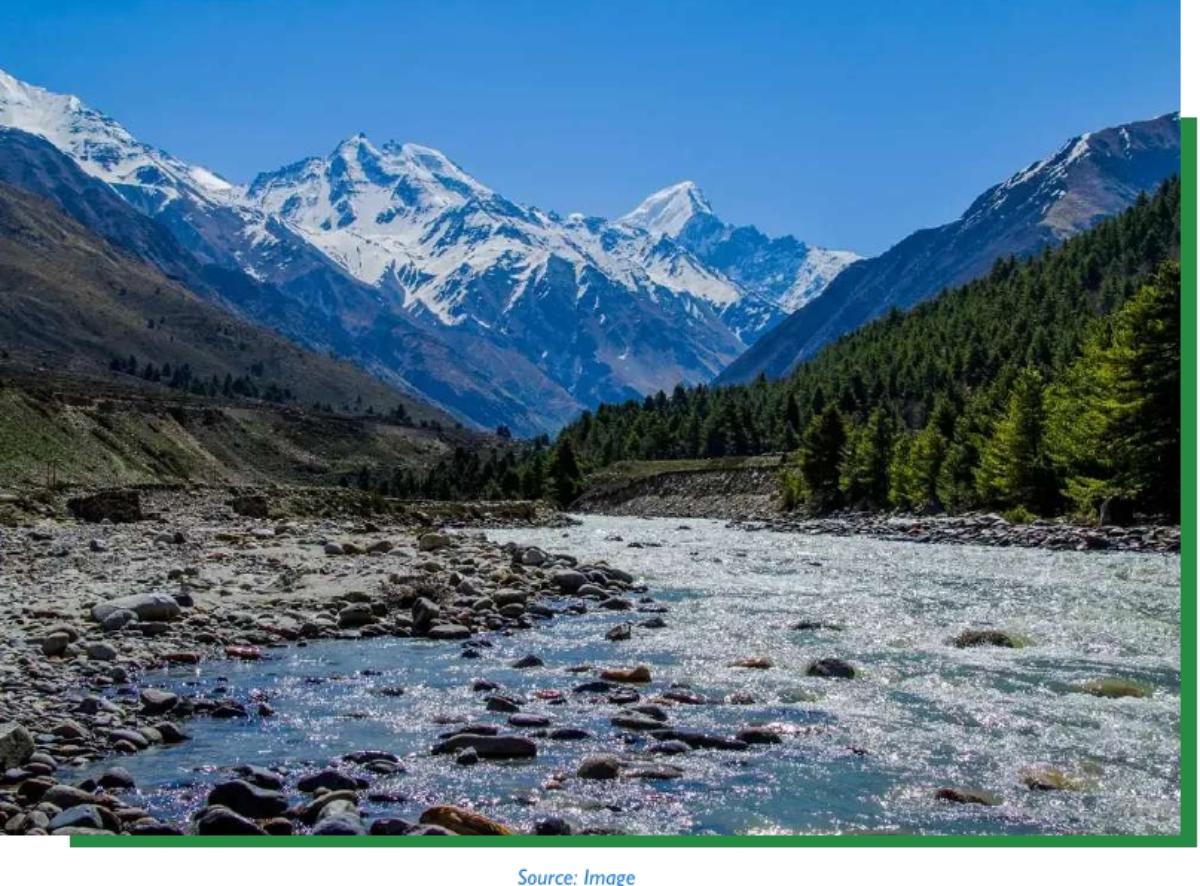Introduction
The Schedule Tribes and Other Traditional Forest Dwellers (Recognition of Forest Rights) Act, 2006 provides land access, control, use and management right to tribal and forest dwellers who have been living in tribal, forest areas for generations. Land ownership in forest areas has always been a complex and contentious issue in India. Most of the land in forest areas falls under the custody of the Forest Department. Forest dwelling communities live in forest areas and use forest land and resources for their living and livelihood. This results in conflicts between forest department and communities for access, control, use and management right of land and forest resources.
There have been efforts to re-distribute rightful land tenure to marginalised and poor people particularly forest dwelling communities. The Schedule Tribe and Other Traditional Forest Dwellers (Recognition of Forest Rights) Act, 2006 also known as the Forest Rights Act (FRA) is an attempt to redress historically unresolved issues pertinent to the life and livelihood dependence of forest dwelling communities on forest land and resources.
The law recognises three forms of Rights for Forest Dwelling Communities
- Individual Forest Rights (IFR) given to households traditionally living in the forest land and using it.
- Community Forest Rights (CFR) for only use and right over Non Timber Forest Produce and
- CFR for the conservation and management by community forest management committee. However, rights do not allow selling of the land in any form rather judiciously and sustainably use and manage by the individual and community.
Community rights and Community Forest Resource rights are two categories of rights which can be awarded to forest dwelling communities and tribes under the Forest Rights Act, 2006. Various sub-sections of Section 3 of the Act provide for the right to access, use and dispose of minor forest produces and other exploitable forest resources and services. It includes the right of grazing, camping and collecting fuel and fodder from the forest.
Further, the Section 3 (i) of the Act provides for vesting of rights to manage, conserve, protect and regenerate the claimed forest. The law notes, “Rights to protect, regenerate or conserve or manage any community forest resource which they have been traditionally protecting and conserving for sustainable use.” The law further provides for creating a separate category of forest recognized under this provision of the Act.
National Scenario of FRA Implementation
Since it was passed in the parliament, this law has provided land ownership to more than two million households in different states. Moreover, more than 1 lakh community claims over forest resources have been settled.
Status of FRA Claims Sanctioned All India
| All India | Claims Settled | Total Land Sanctioned (In acres) |
| Individual Rights | 2370001 | 517511244 |
| Community Rights | 115180 | 1383871158 |
| Total | 2485181 | 1901382402 |
Source: https://tribal.nic.in/FRA.aspx
FRA Scenario of Rajasthan
Rajasthan is the largest state in India in terms of total land. The state has about 32,737 sq km (2,740 8.00 hectares) of forest area which is about 8% of total land of the state. According to the Government of Rajasthan, the Rajasthan Forest Department is responsible for the management of 9.6% of the state area in order to conserve as well as protect wildlife and forest within the state.
Rajasthan state is known for its vast desert area. However, the eastern and southern Rajasthan have concentrated forest cover with pockets of scheduled tribe (ST) population and forest dwelling communities. The life and livelihood of these people are dependent on forest. They have been living in forest land for generations. Also, they do farming in occupied forest land and get various forest resources for meeting various life and livelihood needs. Their culture is also connected to forest. Thus, forest becomes an inseparable aspect of their life and livelihood.
According to Census, 2011, as many as 92.38 lakh people, that is about 13% of the population in the state, are dependent on forest for their life and livelihood. There are about 16 districts in Rajasthan where there is potential of FRA implementation and people also in these districts significantly dependent on the forest.
Since these people live on the forest land, forest department officials visit their villages for eviction of illegal capture of forest land and the community came in face to face conflict with the forest officials. There have been cases where people’s farms have been destroyed, fines have been imposed and people have been taken to custody. There are also cases of corruption and harassment of women. In such a context, FRA provides a rightful space to ST and OFD communities to live and continue their livelihood activities in their occupied land.
Therefore, proper implementation of the FRA has the potential to impact the life and livelihood of a large segment of population in the state. However, there is a huge gap in total number of claims by the individuals and community and number of claims sanctioned.
In Rajasthan, until December 2023, 48724 Individual Forest Right (IFR) claims and 2445 Community Forest Rights claims (CFR) have been sanctioned out of total 120218 claim application received. See Table below.
| Status of FRA Claims Sanctioned in Rajasthan | |
| Total Claims Application Received | 120218 |
| Total Claim Sanctioned | 51169 |
| Total Claims Rejected | 64302 |
| Claims under Review Process | 4747 |
| Total Land Sanctioned (in Hectare) | 138283 |
| IFR Sanctioned | 48724 |
| Total Land Sanctioned (in Hectare) | 27903 |
| CFR Sanctioned | 2445 |
| Total Land Sanctioned (in Hectare) | 110360 |
Over 50% of the claims have been rejected. Thus, it becomes important to understand the reasons for rejection of such a huge number of claims; and also to understand the efforts of various stakeholders such as community, Government and civil society organisations to overcome the challenges. This study by RGICS aimed to do that.
The study was also conducted with an aim to understand the contributing factors for the successful implementation of FRA where it has happened. Secondary literature is available on issues related to implementation of FRA. However, there are limited studies on understanding various facilitative, contributing factors for successful implementation of FRA in various pockets of the country and particularly in context of Rajasthan.
The Udaipur district of Rajasthan saw the maximum number (2467) of total 8548 in the state. Thus, we have identified Udaipur district for this study to understand various factors, which contributed to this momentum, so that the same can be replicated elsewhere and implementation and policy gap can be addressed.
The Study and Methodology
This qualitative study conducted by RGICS to understand the implementation status of the Forest Rights Act, 2006 in Rajasthan is part of a series of such studies conducted in a number of other states by the organization. Field work for this study was conducted in Kotra block of Udaipur district in Rajasthan, where Kotra Adivasi Santgathan and Astha Sansthan are helping tribal to claim their community forest rights.
Researchers reviewed the available literature, interviewed the experts, activists and Government officials to understand the issues in detail and then visited 5 villages in Kotra Block of Rajasthan. Out of 5 villages, 3 villages have been sanctioned Community Forest Rights and remaining 2 villages are still struggling and waiting for the claims to be sanctioned.
NGO Astha and community based organisation Kotra Adivasi Sansthan (KAS) supported the community to file the claims and helped in the process of accessing claims. We accessed studied villages through the contacts of the organisation. We conducted Focused Group discussion with the selected villagers and Forest Management Committee members was done to understand the entire process of Accessing community Forest Rights. In few cases triangulation was done with Government records and from KAS wherever possible to verify the information provided by the community.
Field Information and Discussion
Kotra (also spelt Kotda) is a Block, Tehsil of Udaipur district, consisting of 262 revenue villages and 31 panchayats. The tehsil is bordered to the north by Pali and Sirohi districts, to the east by Gogunda and Jhadol tehsils, and to the south by Gujarat state. The tehsil headquarter is located in the village of Kotra, southwest of the Udaipur. Kotra tehsil has 96% of the population belonging to Scheduled Tribes, mainly Bhils and Garasias.
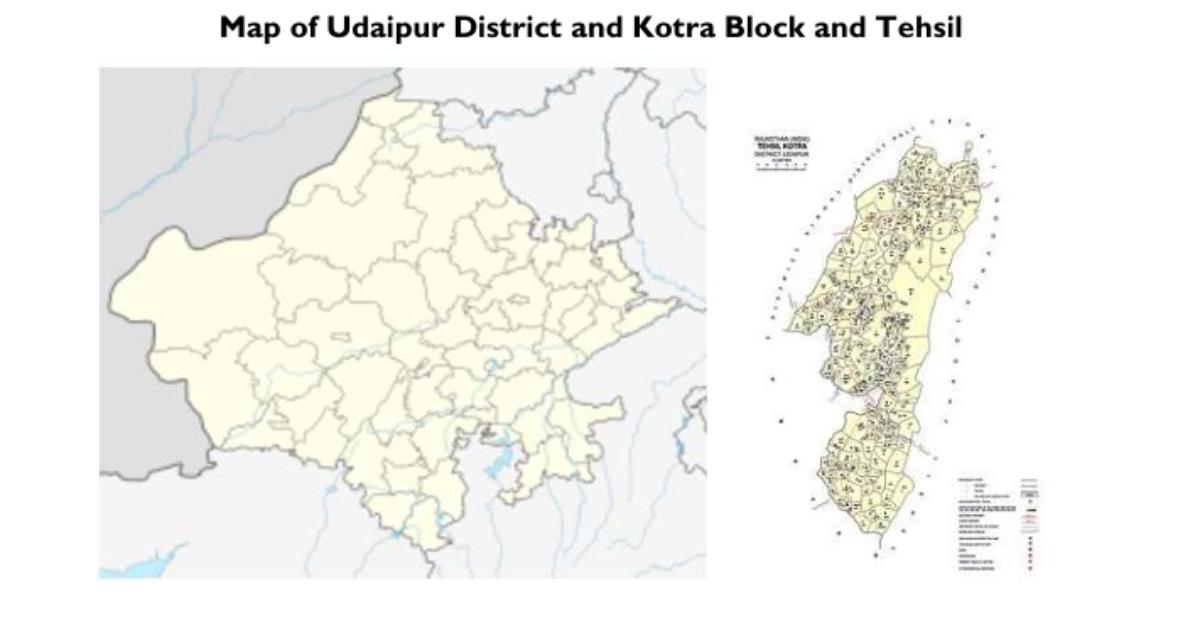
Kotra Adivasi Sansthan (KAS) helped 161 Gram Sabha in the Udaipur district to file their CFR claim under the Forest Rights Act, 2006. Of these, 75 CFR claims have been approved by the concerned authority. We visited 3 villages namely Mewaro Ka Math, Tulika Ka Khet and Bedadhar, whose claims have been approved.
The forest has an abundance of bamboo and other local species such as Khankra (Butea monosperma, Palash), Sitafal (Annona squamosa, Custard apple), Reetha (Sapindus mukorossi, soapnut), Hara (Terminalia chebula) and Behera (Terminalia bellirica) and Amla (Phyllanthus emblica, Indian Gooseberry). Moreover, it is the habitat of many wildlife species such as leopard, bear, rabbit, pig and hyena.
We interacted with the community people to understand the process of getting CFR claims and what changes they experienced after they received the claim. Moreover, what are the future plans of the community to conserve and manage the forest.
The secretary of KAS, Mr. Sarfraz told us that the most CFR claims pending for years in their area of operations are stuck due to two main reasons. 29 CFR claims are pending because the claimed forest land is not settled in revenue records. These recorded purposes of the forest land in the records of the Revenue department include agriculture land, habitation, pasture land and land belonging to other agencies.
According to information available on the website of the state forest department nearly 15% of State’s forest land is not recorded in the accounts of the state revenue department[1]. Of this un-settled forest land, a large portion is recorded as individual’s ‘naap’ land and habitation. According to the government of Rajasthan 4,87,501 hectare of forest land which accounts for 15% of the total forest land in the state is un-settled. The state revenue department has claimed that out of this nearly 2 lakh hectare of this land cannot be easily settled as these forest lands are recorded for some other purposes in the records of the forest department[2].
The second reason behind the long pending CFR claim in Kotra region of Udaipur is that the claimed forest land is in the wildlife sanctuary. Kotra Adivasi Sansthan informed that 36 CFR claims filed by them for different Gram Sabhas are pending as they are in the “Phulwari ki Nal” wildlife sanctuary. We visited two villages namely Torana and Adiwada to understand how above mentioned two reasons have restricted people to avail benefits of the Forest Rights Act.
Mewaro Ka Math
Mewaro Ka Math is a small village Mewaro Ka Math Panchayat in Kotra Block of Rajasthan. The village is surrounded by forest. We conducted a focus group discussion in the village where about 15 male and female villagers participated. The group informed us that the entire village is inhabited by Garasia tribe. They further informed that as per their tradition, Garasia is the main tribe of the village and members of this tribe hold the position of village leader (mukhiya).
According to villagers, in the last four to five decades many people from outside settled here. The village has their own system of inducting and accommodating a new person willing to settle in the village. Traditionally the Mukhiya had power to allot land to the migrants from the barren and unused land of the village. There are about 150 households living in the village. The average land holding is 2-3 bigha. The primary livelihood is farming and migrant labour.
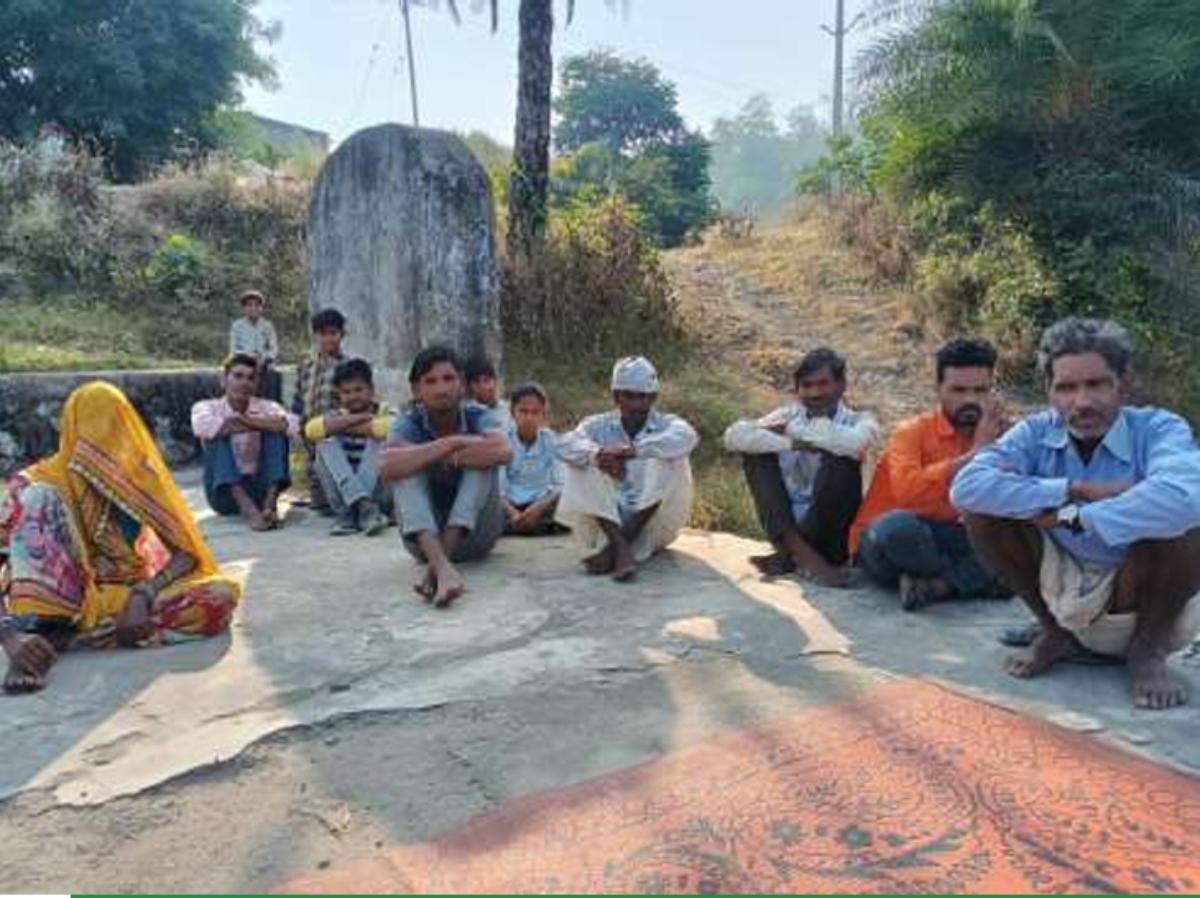
The villagers collect different kinds of forest produce for their own use and also sell in the market. They formed Gaon Sabha under PESA Act 20 years back for made different rules for the protection and promotion forest.
The Gram Sabha of Mewaro Ka Math filed CFR application multiple times to the Panchayat. However, none of their application was processed. Then with the support of KAS, the community followed it up with the Forest Department and at the end with the support of forest department official, mobilization of political support and KAS, their CFR has been sanctioned.
Total 772 Hectare land was sanctioned under CFR. After sanction, community with the support of Forest Department took various soil and water conservation measures to promote forest in the area. Now community plans to plant usable trees in the sanctioned area and craft rules for its use by the community.
Tulika Ka Khet
Tulika ka khet is small village of Bakawas Panchayat. The tribe live in the village are called Garasia and Gameti. The total households are 70 and population of the village is about 400. The village is surrounded by forest. We conducted a focus group discussion in the village where about 20 male and female villagers participated.
Most people in the village are cultivators. However, most households are marginal farmers with very limited forest land. The focus group discussion held in the village informed us that seasonal outmigration of men is very common in the village to support families. Many young people migrate to nearby cities as agriculture and construction labourers.
In this village, women were at the forefront of community mobilization, filing of application for CFR, and negotiating with Panchayat and Forest and Revenue Department. The village has a Van Aaadhikar (Forest Rights) Committee and Van Prabhandhan (Forest Management) Committee. These committees are working for last seven years to file CFR claim, follow up, protect and conserve forest. The village was sanctioned CFR. The community now plans to plant various usable trees and fodder. They have also imposed fines for cutting of trees.
Bedadhar
Bedadhar is a small village of Bedadhar Panchayat. The tribe live in the village are called Garasia. The total households are about 96 and population of the village is about 350. The village is surrounded by dense forest. We conducted a focus group discussion in the village where about 10 male villagers participated.
Most people in the village are cultivators. However, most households are marginal farmers with very limited forest land. The focus group discussion held in the village informed us that seasonal outmigration of men is very common in the village to support families. Many young people migrate to nearby cities in Gujarat and Rajasthan as agriculture and construction labourers.
Villagers applied for CFR three years back with the support of KAS and later followed up with various Government officials. Recently they got the sanction. They have made the rule for conservation of forest but no system of fine yet because they found that community generally follows the rule.
Torana
Torana village is part of Juda Gram Panchayat in Kotra block of Rajasthan. The total population of the village is about 1000. The village is surrounded by a reserve forest under the jurisdiction of Udaipur (north) Territorial forest division. We conducted a focus group discussion in the village where about 20 male and female villagers participated. The group informed us that the entire village is inhabited by various groups of Scheduled Tribe. Garasia and Bheel are two major tribal groups in this village. They further informed that as per their tradition, Garasia is the main tribe of the village and members of this tribe hold the position of village leader (mukhiya).
This village has always been open to members of other tribal groups in the region. According to villagers, in the last four to five decades many people from outside settled here. The village has their own system of inducting and accommodating a new person willing to settle in the village. Traditionally the Mukhiya had power to allot land to the migrant from the barren and unused land of the village. However, today most people who have come from outside have bought land from other people in the village.
Most people in the village are cultivators. However, most households are marginal farmers with very limited forest land. The villagers informed us that seasonal outmigration of men is very common in the village to support families. Many young people migrate to nearby regions of Gujarat as agriculture labourers. However, a sizable migrant population from the region is also accommodated by big cities of Rajasthan like Udaipur as construction workers.
The third major activity of local subsistence is collection of minor forest products (MFP) from their adjacent forest. Villagers informed us that they collect a number of forest products for their own consumption and trade. Major forest products collected by villagers to sell in the market include Gond, Amla, Honey, Sitafal and Tendu. They also collect other fruits and vegetables such as kanji, bahera, areetha and khankara for their own consumption.
The forest apart from these products also provides them fuel and fodder on a regular basis. Bamboo is in abundance in the forest, so people from the village are hired by the contractor of the forest department for commercial harvesting of bamboo.The forest of the village spread on three sides of the village, well demarcated using natural boundaries like hilltop and stream.
This forest land is governed by the Udaipur (north) Territorial forest division of the state forest department and has full control over its forest resources. The forest department allows villagers to access their rights related to collection of fuel, fodder and NTFP as per management plan approved by the state government.
The Kotra Adivasi Sansthan helped villagers to develop an application to claim their rights of forest under the Forest Rights Act, 2006. A long process of social mobilization and community organization led to filing of CFR claim in 2018. Following the filing of the CFR claim, officials of revenue and forest department conducted field verification of the claimed forest land by the villagers. These officials found that the claimed forest land is not recorded in the records of the revenue department.
The claimed forest land is currently in the category of un-settled land in the books of the state forest department. Legally every piece of the forest land must be surveyed by the revenue department to settle the land ownership of the forest land. The CFR claim of the Torna village could not be approved as the claimed land is un-settled. However, villagers have received 11 IFR claims out of total 41 claims filled by villagers. Most of these claims could not be approved because of the same reason- unsettled forest land.
The unsettled forest of Torna village has also restricted them from accessing other developmental rights such as road, electricity, telephone and other major infrastructural projects in the village. Villagers informed that the conflict among forest and revenue departments has led to abortion of many developmental projects in the villages including a tower for mobile connection.
Aariwara- Sanctuary
Ariwara is a village under the Beelwan Gram Panchayat in Kotra development block of Udaipur. A village of nearly 100 households has a population of 550 belonging to scheduled tribes. Major tribal groups in the village are Grasia, Gamatu, Bheel, Laur and Parmar. The village is a PESA village located in the Phulwari Ki Nal Sanctuary in Udaipur (north) forest division. According to census data, most families in the village are cultivators, however the focus group discussion organized in the villages informed us that households in the village do not have enough agricultural land. Most people migrate out in search of jobs. Most people migrate to nearby regions in Gujarat during agricultural season to work as agriculture labourers. Other people work as construction labour in cities of Rajasthan and Gujarat.
The Ariwara village is one among 134 villages located inside the Phulwari Ki Nal Wildlife Sanctuary. The notification for creation of this sanctuary was issued in 1983 under the Wildlife Conservation Act, 1972. The sanctuary is habitat of wildlife such as Leopard, Hyena, Sloth Bear, Jackal, Fox, Porcupine, Jungle Cat, Langoor and Indian Peafowl.
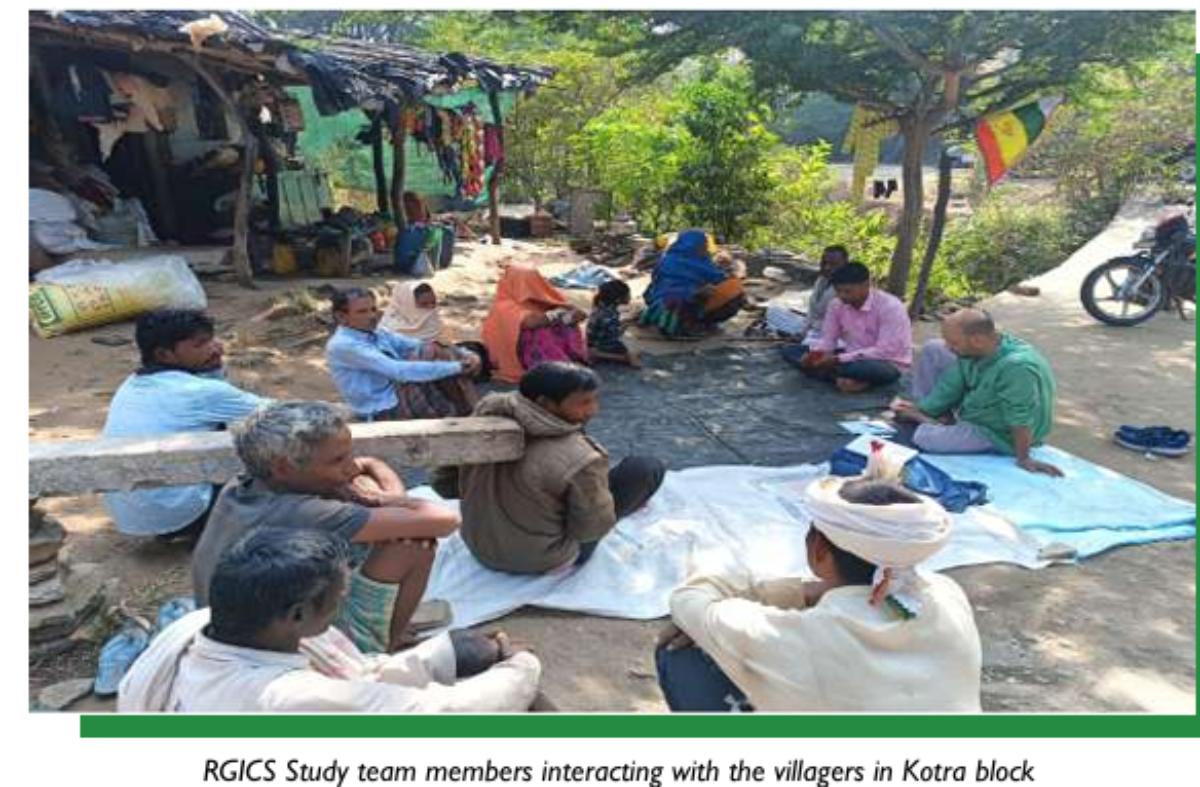
The forest is the backbone of the subsistence as it provides local villagers fuel, fodder and many minor forest products such as Gond, Amla, Reetha, Honey, Seetaphal, Kanji, Mahua and Ratanjot. Most of these products are being sold in the local market through contractors.
The management plan of the Phulwari ki Nal Wildlife Sanctuary acknowledges traditional rights of villagers on forest for their lives and livelihoods. The district collector of Udaipur settled most of the traditional rights in 1998 under section 19-25 of the Wildlife Conservation Act, 1972. Further, the management plan reveals that all settled rights have been withdrawn by the forest department in compliance with orders of Supreme Court of India in IA No 548 and orders dated 11.05.2001[3].
Currently, villagers are not entitled to access any forest right. Villagers told us in the focus group discussion that, despite blanket ban on access to forest, villagers have been using forest for fuel, fodder and some minor forest products. However, all these transactions are solely dependent on mercy of forest officials. Often, villagers are booked for illegally collecting forest produce from the sanctuary.
In 2018, with the help of KAS, the Adiwara Gram Sabha filed its CFR claim under the forest rights Act, 2006. In their application, villagers had applied for recognition of their traditional forest rights along with the right to manage the forest and its resources. However, no action has been taken on this application. It has been observed that maximum cases of CFR in the protected forest are either rejected or not processed by SDLCs.
The reason for keeping the CFR claim of Ariwara village on hold was communicated to the villagers was that the forest department wants to declare the forest as Critical Wildlife Habitat under the Forest Rights Act, 2006, which has not been done so far. The forest department has kept it on hold till the area has been declared as a critical wildlife habitat.
Management of CFR Entitlements
The overall objective of the Community Forest Rights (CFR) under the Forest Rights Act, 2006 is to allow community members to autonomously manage forest and its resources to support their lives, livelihoods and conserve local biodiversity. This provision is on the principle that the social and economic interests/benefits of forest dwellers incentivizes and motivates them to conserve forest and its resources. This principle reflects in the actions and behaviour of villagers of Tuli Ka Khet and Mewaro Ka Math. However, villagers could not mentally disassociate themselves from the historical dominance of the state forest department.
Our field investigation in five villages of the Udaipur district in Rajasthan reveals that the management of community forest allotted as CFR under the Forest Rights Act, 2006 is dependent on local community leadership. Villagers of Tuli Ka Khet showed greater interest in managing and distribution of forest resources. Moreover, they systematically planned their forest conservation activities to maximize their economic gain in the form of firewood, fodder and NTFP.
Using the opportunity, villagers of this small village developed their own rules, punishment on rule violation, local grievance redressal system to regulate behaviour of forest users. Such pro-active and visionary planning led to decrease in forest fire, conservation of trees, increase in supply of fire wood and fodder and strengthened social fencing of forest. The gram sabha of Tuli Ka Khet village managing this community forest is led by women.
In this study we observed that the Gram Sabha of Mewaro Ka Math has also involved community members in activities related to forest conservation. Mere allotment of the forest land to the Gram Sabha has substantially decreased conflict between villagers and forest officials on use of forest products. Villagers now feel more confident and fearless while using their forest.
However, the Gram Sabha has not developed and executed any plan to maximize social, economic and ecological outcomes. In the last few years many forest conservation activities such as fencing, soil conservation, water conservation and other similar activities were carried out in their community forest. But, all of these activities were carried out by the forest department and villagers participated.
The government of Rajasthan recognized the community forest rights of Bedadhar in 2018. This small village of about a population of 300 has not understood the strength of the CFR granted to them. In a focus group discussion held in this village, we observed that the Gram Sabha of the village has not developed any plan to maximize their social, economic and ecological outcomes. The lack of awareness and no local leadership are major reasons for inaction of villagers. Moreover, the village and community forest share very complex boundaries with adjacent forests governed by the state forest department. Therefore, forest officials still exercise their authority to control use of forest land and its resources.
Other two villages- Torana and Ariwara, where the CFR claims are still under process, villagers are waiting for recognition of their CFR claim. While people in both of these villages are eager to have control over their forest land and forest resources, none of them have a clear vision on how to maximize social, economic and ecological gain once it is awarded.
In all five villages where this study was conducted, a local NGO named Kotada Adivasi Sangathan (KAS) is facilitating the process of CFR and IFR claims. The organization has successfully helped many villages in the region to secure their CFR claim under the Forest Rights Act. So far KAS has been focusing on getting CFR claims awarded. We also observed that the organization is now working with villagers where CFR is already awarded to develop their forest management plan.
We observed that local leadership, community ownership and active participation of women are crucial for management of forests recognized under the forest rights Act. The study team observed that strong community leadership, active engagement of women and awareness have resulted in maximization of social, economic and ecological benefits.
[1] https://forest.rajasthan.gov.in/content/dam/raj/forest/ForestDepartment/PDFs/Department%20Wing/Forest%20Settlement/Forest_Settlement.pdf
[2] https://forest.rajasthan.gov.in/content/dam/raj/forest/ForestDepartment/PDFs/Department%20Wing/Forest%20Settlement/Forest_Settlement.pdf
[3] https://www.geocities.ws/cwwraj/2007-08/apo_phulwari.pdf



